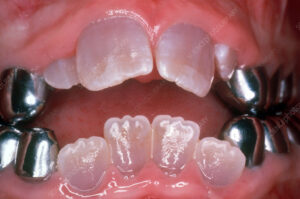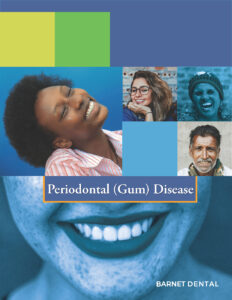Barnet University Hospital
Contact
Hours
- Monday: 9:00am – 9:00pm
- Tuesday: 9:00am – 6:00pm
- Wednesday: 9:00am – 9:00pm
- Thursday: 9:00am – 9:00pm
- Friday: 9:00am – 5:00pm
Barnet University Hospital, a leading healthcare institution located in New York, offers a comprehensive range of medical and dental services. This fictional hospital is renowned for its state-of-the-art facilities and commitment to providing high-quality care to all patients.
Medical Services
General Medicine and Surgery
- Emergency Services: Open 24/7, equipped with advanced life-saving technology.
- Inpatient and Outpatient Care: Comprehensive services including internal medicine, cardiology, neurology, orthopedics, and more.
- Surgical Specialties: General surgery, trauma surgery, minimally invasive procedures, and specialized surgical interventions.
Specialized Departments
- Oncology: Cutting-edge cancer treatment and research center.
- Pediatrics: Comprehensive care for infants, children, and adolescents.
- Women’s Health: Maternity services, gynecology, and reproductive health.
Dental Services
General Dentistry
- Routine Checkups and Cleanings: Preventive care to maintain oral health.
- Fillings and Restorations: Treatment of cavities and damaged teeth.
Specialized Dental Care
- Oral and Maxillofacial Surgery: Surgical extraction of teeth, removal of diseased tissue, and corrective jaw surgery.
- Orthodontics: Braces and other orthodontic treatments for children and adults to correct dental alignment and bite issues.
- Pediatric Dentistry: Specialized dental care for children, including preventive treatments like sealants and fluoride applications.
- Periodontics: Treatment of gum disease and other conditions affecting the tissues surrounding the teeth.
- Prosthodontics: Replacement of missing teeth with crowns, bridges, dentures, and dental implants.
Dentinogenesis Imperfecta
Dentinogenesis imperfecta (DI) is a hereditary genetic disorder that affects the development and formation of dentin, one of the primary tissues that make up teeth. It is characterized by abnormal dentin structure and composition, leading to weakened and discolored teeth that are prone to fracture, wear, and sensitivity. Dentinogenesis imperfecta is typically inherited as an autosomal dominant trait, meaning that a child has a 50% chance of inheriting the condition if one of their parents carries the mutated gene.
Here are some key points about dentinogenesis imperfecta:
- Types: Dentinogenesis imperfecta is classified into three main types based on clinical and genetic features:
- Type I: Also known as classic or hereditary opalescent dentinogenesis imperfecta, this type is the most common and severe form of the condition. It is characterized by translucent or opalescent (bluish-gray) teeth with bulbous crowns, narrow roots, and severe attrition (wear) of the enamel. Type I DI is caused by mutations in the DSPP (dentin sialophosphoprotein) gene, which encodes a protein involved in dentin formation.
- Type II: Also known as coronal dentinogenesis imperfecta, this type is characterized by similar dental abnormalities as type I DI but with less severe enamel involvement. Teeth may appear yellow-brown or amber in color and may be more resistant to fracture compared to type I DI. Type II DI is also caused by mutations in the DSPP gene.
- Type III: Also known as Brandywine type dentinogenesis imperfecta, this type is characterized by similar dental abnormalities as type II DI but with additional skeletal abnormalities such as short stature and joint laxity. Type III DI is caused by mutations in the DSPP gene as well.
- Clinical Presentation: Dentinogenesis imperfecta typically presents with a distinctive appearance of the teeth, including opalescent or discolored enamel, bulbous crowns, and attrition of the enamel exposing the underlying dentin. The teeth may appear translucent or amber in color, and the enamel may chip or fracture easily due to its weakened structure. Individuals with dentinogenesis imperfecta may also experience dental sensitivity, pulp exposure, and increased risk of dental caries and infections.
- Diagnosis: Diagnosis of dentinogenesis imperfecta is based on clinical and radiographic findings, including characteristic dental abnormalities such as opalescent or discolored enamel, bulbous crowns, and narrowed pulp chambers. Dental X-rays may reveal thin and bulbous roots, obliteration of the pulp chambers, and dentin defects such as taurodontism (enlarged pulp chambers) or pulpal calcifications. Genetic testing may be performed to confirm the diagnosis and identify the underlying genetic mutation responsible for the condition.
- Treatment: Treatment of dentinogenesis imperfecta focuses on preserving tooth structure, preventing complications, and improving oral function and aesthetics. Management options may include dental restorations such as crowns, veneers, or composite fillings to protect and reinforce weakened teeth, extraction of severely affected teeth followed by prosthetic replacement, endodontic therapy (root canal treatment) for teeth with pulp exposure or infection, and preventive measures such as fluoride therapy and meticulous oral hygiene to reduce the risk of dental caries and infections.
In summary, dentinogenesis imperfecta is a hereditary genetic disorder characterized by abnormal development and structure of dentin, resulting in weakened and discolored teeth that are prone to fracture, wear, and sensitivity. Early diagnosis and appropriate dental management are essential for preserving tooth structure, preventing complications, and improving oral function and aesthetics in individuals with dentinogenesis imperfecta.
Dentoalveolar Fracture
A dentoalveolar fracture refers to a fracture involving both the teeth and the surrounding alveolar bone, which forms the socket or housing for the teeth within the jawbone. These fractures commonly occur as a result of trauma to the face or mouth, such as motor vehicle accidents, falls, sports injuries, or physical altercations.
Here are some key points about dentoalveolar fractures:
- Types: Dentoalveolar fractures can involve various components of the dental and alveolar structures, including the teeth, alveolar bone, periodontal ligaments, and surrounding soft tissues. Common types of dentoalveolar fractures include:
- Crown fractures: Fractures involving the enamel, dentin, or pulp of the tooth crown, which may range from minor chipping or enamel fractures to more extensive damage affecting the underlying dentin and pulp tissues.
- Root fractures: Fractures involving the roots of the teeth, which may occur horizontally, vertically, or obliquely along the length of the root. Root fractures may be asymptomatic or associated with pain, mobility, or displacement of the affected tooth.
- Alveolar fractures: Fractures involving the alveolar bone surrounding the teeth, which may result in displacement or instability of the teeth within their sockets.
- Avulsion: Complete displacement of a tooth from its socket due to trauma, resulting in total loss of tooth attachment.
- Clinical Presentation: Dentoalveolar fractures may present with various signs and symptoms depending on the extent and severity of the injury. Common clinical features may include:
- Pain or tenderness in the affected area
- Swelling or bruising of the soft tissues
- Mobility or displacement of the affected teeth
- Bleeding or lacerations of the gums or oral mucosa
- Difficulty chewing or biting due to malocclusion or instability of the teeth
- Sensitivity to temperature or pressure in the affected teeth
- Visual deformity or asymmetry of the face or jaw
- Diagnosis: Diagnosis of dentoalveolar fractures is typically based on clinical examination, radiographic imaging, and assessment of the patient's medical history and mechanism of injury. Dental X-rays, such as periapical or panoramic views, may be used to visualize the extent and location of the fractures, assess the integrity of the dental and alveolar structures, and guide treatment planning.
- Treatment: Treatment of dentoalveolar fractures aims to restore dental function, stability, and aesthetics while preserving or restoring the health of the affected teeth and supporting tissues. Management options may include:
- Conservative measures such as dental splinting to stabilize mobile teeth, analgesics to manage pain, and antibiotics to prevent infection.
- Dental restorations such as fillings, crowns, or veneers to repair damaged teeth and restore aesthetics and function.
- Surgical interventions such as tooth repositioning, root canal therapy, or extraction of severely damaged or non-restorable teeth.
- Follow-up care and monitoring to assess healing, function, and long-term outcomes of treatment.
In summary, dentoalveolar fractures involve both the teeth and surrounding alveolar bone and commonly occur as a result of trauma to the face or mouth. Prompt diagnosis and appropriate management are essential for preserving dental function, aesthetics, and oral health in individuals with dentoalveolar fractures. Treatment options may vary depending on the extent and severity of the injury and may include conservative measures, dental restorations, and surgical interventions aimed at restoring dental function and stability.




